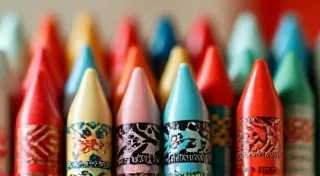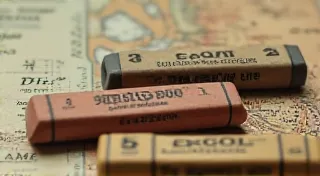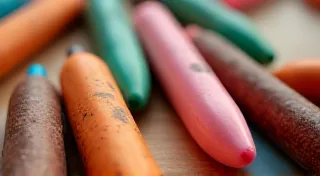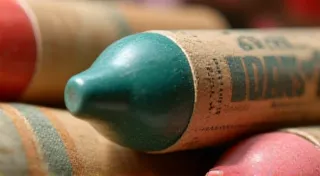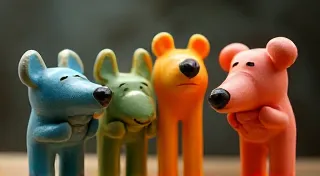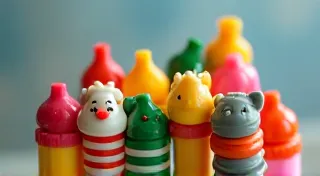The Evolution of Eraser Shapes: From Rectangles to Novelty Designs
There's a quiet beauty in the commonplace, a subtle poetry in the overlooked. And few objects embody this more perfectly than the humble pencil eraser. We use them without a second thought, a fleeting tool to correct our mistakes. But when you begin to collect vintage pencil erasers, you start to see them not as utilitarian objects, but as miniature works of art, tiny time capsules reflecting the trends, anxieties, and playful innovations of generations past. The story isn’t just about erasing; it’s about a fascinating journey in design and manufacturing.
My own fascination began unexpectedly. I was helping my grandmother clear out her attic, a trove of forgotten treasures. Amongst the chipped porcelain dolls and faded photographs, I found a small box filled with pencil erasers. They weren't the pink rubber rectangles I remembered from school. These were different – shaped like animals, fruit, and even miniature accordions! Each one felt strangely significant, hinting at a world I’d never known.
The Early Days: Rectangles and Rubber's Rise
The earliest pencil erasers, appearing in the mid-19th century, weren't particularly appealing to the eye. They were largely rectangular blocks of rubber, a relatively new material then. The invention of vulcanization by Charles Goodyear in 1839 had made rubber malleable and durable, opening up possibilities beyond the naturally brittle forms it had previously possessed. Prior to that, breadcrumbs were commonly used to remove pencil marks – hardly a refined solution!
The need for an eraser arose with the increasing popularity of pencils. The graphite pencil, while known for centuries, didn't truly become a widespread writing tool until the early 19th century. The demand for a reliable way to remove pencil marks spurred innovation, and the humble rectangular eraser was born. These early iterations were often quite hard and abrasive, requiring a delicate touch to avoid damaging the paper. They were a necessary evil, a functional solution to a practical problem. Understanding the history of rubber itself, from its natural form to the synthetic compounds we use today, provides even greater context for this evolution. Readers interested in this deeper dive can explore the history of rubber composition.
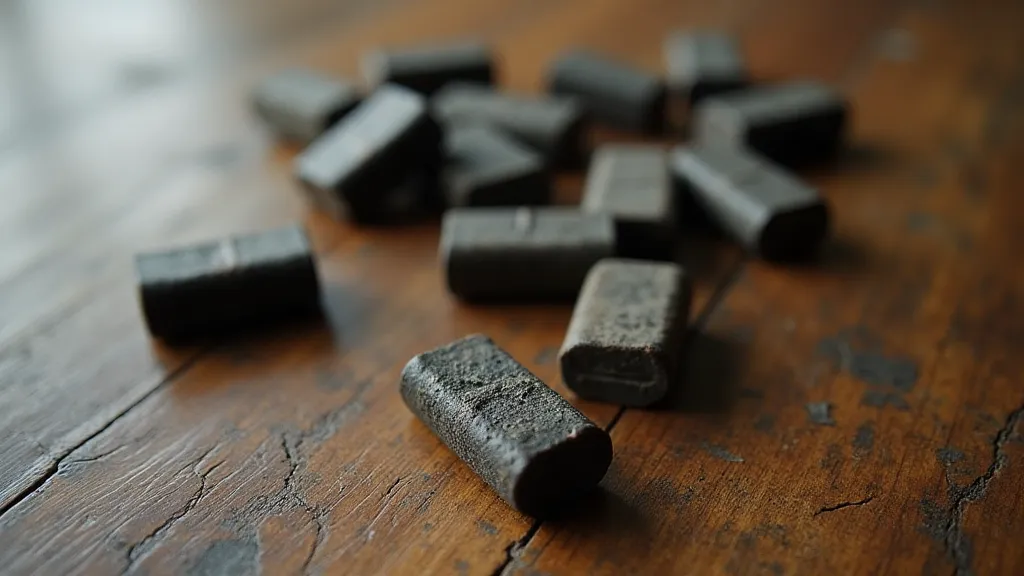
The Dawn of Shape: Art and the Industrial Revolution
As the Industrial Revolution progressed, manufacturing techniques improved, allowing for more complex shapes. The late 1800s and early 19th century witnessed the first attempts at shaping erasers beyond the simple rectangle. These weren't driven solely by aesthetics; they were often practical. Rounded corners reduced the risk of tearing paper, and different shapes could be easier to grip. But a desire for novelty was certainly at play. Manufacturers recognized that a more visually appealing eraser could be a powerful marketing tool.
The rise of advertising also played a key role. Companies began to realize that a distinctive eraser shape could help their brand stand out on crowded shelves. Animal shapes, particularly those of popular pets like cats and dogs, quickly became commonplace. These weren't just erasers; they were miniature toys, endearing objects that children (and adults!) would cherish.
The Golden Age of Novelty: 1920s-1950s
The period between the 1920s and the 1950s is often considered the “golden age” of novelty pencil erasers. This was an era of unprecedented creativity, fueled by advances in manufacturing technology and a consumer culture eager for new and exciting products. Eraser shapes became increasingly elaborate, reflecting the popular culture of the time. We see miniature cars, airplanes, fruit, vegetables, and, most wonderfully, musical instruments – accordions, guitars, and banjos. These weren’t just about erasing; they were about capturing a feeling, a moment in time.
My grandmother’s collection included a tiny accordion eraser, made of a soft, pliable rubber. Holding it in my hand, I imagined the child who once held it, meticulously erasing mistakes while dreaming of playing a grand concert. It's a tangible link to the past, a tiny piece of someone else’s childhood. The craftsmanship, even in such a small object, is remarkable. The tiny pleats of the accordion are painstakingly detailed, the little buttons meticulously rendered. It's a testament to the skill of the artisans who created these miniature masterpieces.
The materials also evolved. While rubber remained the primary ingredient, manufacturers began experimenting with other compounds, including vinyl and synthetic rubber, to create different textures and colors. Some erasers were even coated in vibrant colors or painted with intricate designs. The designs themselves were often inspired by popular culture, creating a fascinating snapshot of the time. Collectors often focus on particular themes and character designs - those with a passion for the unique designs might find themselves captivated by collecting novelty eraser clowns, cartoon and character erasers.
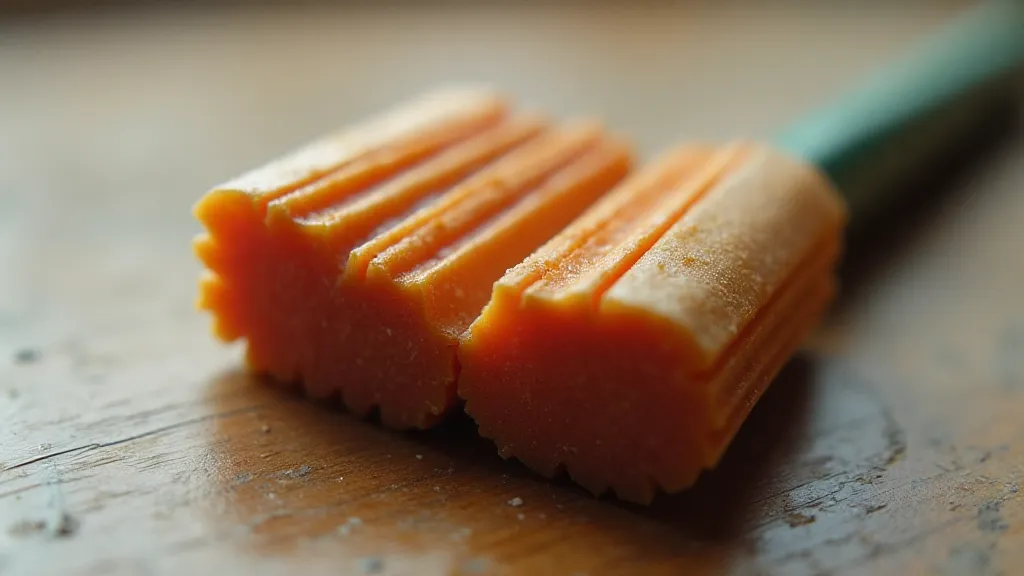
Post-War Simplicity and the Rise of Plastic
The post-war years saw a shift towards simpler designs. The exuberance of the pre-war era tempered with a sense of practicality and austerity. While novelty erasers didn’t disappear entirely, the emphasis shifted towards functionality and affordability. Plastic became increasingly common, offering a cheaper and more versatile alternative to rubber.
However, even in this era of relative simplicity, flashes of creativity continued to emerge. Manufacturers experimented with different colors, textures, and shapes, seeking to capture the attention of consumers in an increasingly competitive market. The focus shifted from elaborate artistry to clever design and branding.
Beyond the Basics: Exploring Artistic Eraser Designs
The evolution of the pencil eraser’s shape isn’t solely about functional improvements or cost-effectiveness; it's also deeply intertwined with artistic trends and cultural expression. The mid-20th century saw a flourishing of playful and imaginative designs, reflecting the era's optimism and embrace of novelty.
Imagine the meticulous artistry involved in crafting miniature replicas of musical instruments, like the tiny accordion featured in my grandmother’s collection. These weren't simply tools for correcting mistakes; they were miniature sculptures, reflecting a broader appreciation for art and design. The era’s embrace of playful aesthetics meant that even the most mundane objects could be transformed into delightful works of art.
A Global Perspective: Japanese Eraser Innovations
While the story of novelty erasers is primarily associated with the West, it's important to acknowledge the significant contributions of other cultures. Japan, in particular, has a rich history of innovative eraser designs and manufacturing techniques. Japanese erasers often feature intricate details, whimsical characters, and a unique artistic sensibility.
The attention to detail and craftsmanship found in many Japanese erasers is truly remarkable. They often incorporate unique materials and manufacturing processes, resulting in erasers that are both functional and visually stunning. Further exploration into the techniques and unique artistic expressions can be found by reading more about Japanese vintage eraser designs and manufacturing techniques.
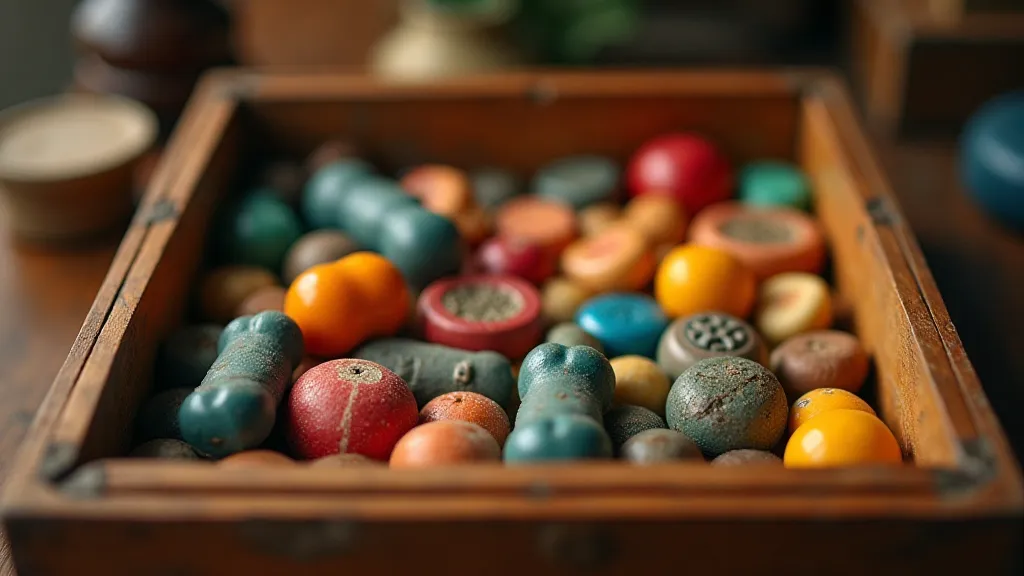
Collecting and Caring for Vintage Erasers
Collecting vintage pencil erasers is more than just acquiring objects; it’s about preserving a piece of history. Many collectors focus on specific themes, such as animal shapes, musical instruments, or erasers from a particular era. Identifying and dating these erasers can be challenging, often requiring careful examination of markings, materials, and design features.
Restoration is generally discouraged. The charm of a vintage eraser lies in its imperfections—the faded colors, the worn edges, the tiny cracks that tell a story of use. Cleaning is usually limited to gentle dusting with a soft brush. Direct sunlight and extreme temperatures should be avoided to prevent further deterioration. Storing them in acid-free containers can help preserve their condition over time. The very fragility of these objects emphasizes their value.
Beyond simply preserving these pieces, a deeper understanding of the artistic movements and cultural context of each eraser can enrich the collecting experience. Each eraser tells a story, reflecting the values, trends, and anxieties of its time.
The evolution of the pencil eraser reflects broader trends in manufacturing, design, and popular culture. From the humble rectangular block to the whimsical novelty shapes of the mid-20th century, these tiny objects offer a fascinating glimpse into the past. They remind us that even the most ordinary things can hold a profound beauty, a silent story waiting to be discovered. And as I hold that tiny accordion eraser in my hand, I’m filled with a renewed appreciation for the creativity, the craftsmanship, and the enduring appeal of these miniature masterpieces.
